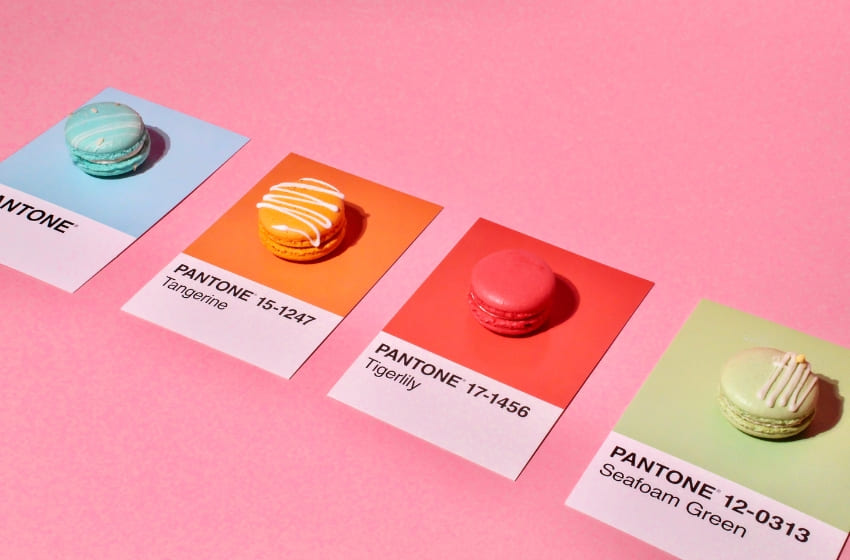
Your logo is the visual cornerstone of your brand, and choosing the right colors for your logo design can significantly impact how your brand is perceived. Colors evoke emotions, create associations, and influence customer decisions. A well-thought-out color strategy ensures your logo effectively communicates your brand identity.
Understanding Color Psychology in Branding
Each color carries a distinct psychological impact. Here’s a quick overview:
Red: Passion, energy, urgency (e.g., Coca-Cola, YouTube).
This color is often associated with strong emotions, making it effective for brands that want to create excitement. It is frequently used in the food and entertainment industries because it can stimulate appetite and increase heart rates. Red also signifies urgency, which is why it is often seen in clearance sales and call-to-action buttons. However, too much red can be overwhelming, so it should be used strategically. Pairing red with neutral colors like white or gray can help balance its intensity.
Blue: Trust, stability, professionalism (e.g., Facebook, IBM).
Blue is a dominant color in corporate branding because it fosters a sense of trust and reliability. It is widely used in industries such as finance, technology, and healthcare, where security and professionalism are crucial. The shade of blue matters—lighter blues convey openness and communication, while darker blues reflect strength and dependability. Blue is also known to have a calming effect, making it a good choice for brands that want to appear friendly and approachable. However, excessive use of blue can sometimes come across as cold or impersonal.
Green: Growth, health, nature (e.g., Starbucks, Whole Foods).
Green is commonly associated with nature, making it a top choice for eco-friendly brands and businesses in the health and wellness sectors. Dark green is often linked to wealth and prosperity, making it popular among financial institutions. Bright green, on the other hand, conveys a fresh, energetic feel that is well-suited for fitness and organic product brands. Because green is easy on the eyes, it creates a sense of balance and harmony. However, using too much green without contrast may result in a bland or overly neutral design.
Yellow: Optimism, warmth, friendliness (e.g., McDonald’s, IKEA).
Yellow is often associated with happiness, positivity, and youthfulness. Brands that want to appear welcoming and energetic often incorporate yellow in their logos. It is also a great attention-grabber, which is why it is frequently used in signage and advertising. However, yellow can sometimes be hard to read on white backgrounds, so it’s essential to pair it with a contrasting color for clarity. Additionally, too much yellow can cause eye strain, making it less ideal for long-term exposure in branding.
Black: Sophistication, luxury, authority (e.g., Chanel, Nike).
Black exudes power and elegance, making it a staple in high-end fashion and luxury branding. It provides a timeless and sophisticated appeal, making it a great choice for minimalistic logos. Black also contrasts well with almost any color, which enhances its versatility. However, an all-black logo can sometimes feel too serious or intimidating, so incorporating a secondary color can help soften its impact. When used effectively, black can make a brand appear exclusive and high-end.
Purple: Creativity, royalty, wisdom (e.g., Cadbury, Hallmark).
Purple has long been associated with luxury and creativity, making it an excellent choice for brands that want to stand out as unique or premium. Lighter shades of purple, such as lavender, evoke a sense of calm and femininity, while deeper purples represent wealth and sophistication. Many beauty and wellness brands use purple to create a sense of relaxation and indulgence. Because purple is not as commonly used as blue or red, it can help a brand feel distinctive. However, too much purple can sometimes make a brand appear overly whimsical.
Orange: Fun, enthusiasm, creativity (e.g., Fanta, Nickelodeon).
Orange combines the energy of red and the warmth of yellow, making it a highly engaging and playful color. It is frequently used in brands that target younger audiences or promote adventure and creativity. Orange is also associated with affordability and approachability, which is why many discount and budget-friendly brands use it. However, because it is a less conventional choice, it can sometimes be challenging to pair with other colors effectively. To balance its intensity, it can be combined with neutral tones like black, white, or gray.
White: Simplicity, purity, minimalism (e.g., Apple).
White is often used to create a clean and modern aesthetic. It represents purity and simplicity, making it a great choice for brands that emphasize clarity and sophistication. White can also make logos appear more spacious and refined, which is why it is commonly used in minimalist design. However, a white logo may require a contrasting background to ensure visibility, particularly in print media. The strategic use of white space in logo design can enhance readability and make the brand appear more premium.
Choosing the Right Shade
Selecting the right shade within a color is just as important as the color itself. For example:
- Lighter shades (pastels) convey a soft, friendly, or youthful vibe. These shades work well for brands that want to appear approachable, such as those in the beauty, wellness, and childcare industries. Pastel colors are often associated with calmness and positivity, making them ideal for brands that want to evoke warmth and comfort. However, overly light colors may lack contrast and can be difficult to read when used for text-based logos.
- Darker shades create a sense of sophistication, reliability, or depth. Darker colors are commonly used in industries that want to establish authority, such as law firms, luxury brands, and corporate businesses. They add a sense of seriousness and professionalism, but too much dark color can make a brand appear unapproachable. Balancing darker tones with lighter accents can create a more dynamic and engaging look.
- Vibrant shades attract attention and generate excitement. These colors are often used in the entertainment, sports, and food industries to stimulate energy and enthusiasm. Bright colors work well for brands that want to stand out, but they must be used carefully to avoid overwhelming the viewer. A good strategy is to use vibrant shades as accent colors rather than the primary color.
- Muted shades give off a subtle, calming, and professional impression. Muted colors are ideal for brands that want to create a sense of sophistication and timelessness. They work well in industries such as interior design, wellness, and financial services. While they may not be as eye-catching as vibrant colors, muted tones provide a refined and mature look that appeals to specific audiences.
Conclusion
Choosing the right colors for your logo requires a mix of psychology, strategy, and testing. By carefully selecting colors that align with your brand identity, testing their effectiveness, and ensuring their versatility, you can create a logo that is memorable, impactful, and appealing to your target audience. Take the time to analyze your industry trends, target audience preferences, and competitive landscape to ensure your color choices reflect the essence of your brand.




